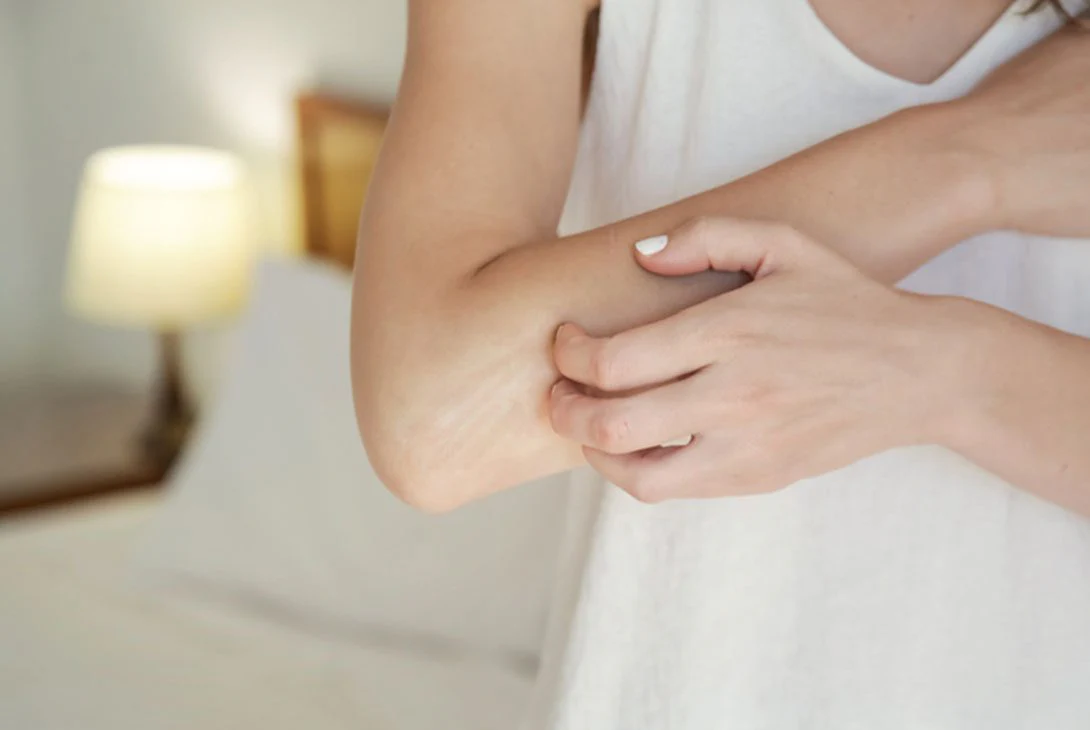What Is Atopic Dermatitis?
Recognizing the Signs: What Does Atopic Dermatitis Look Like?
-
Redness and inflammation: Patches of skin may appear red and swollen.
-
Intense itching: This is one of the hallmark symptoms, often leading to scratching that worsens the condition.
-
Dry, scaly skin: Affected areas may become rough and flaky.
-
Weeping or crusting lesions: In severe cases, the skin may ooze fluid and form crusts.
Why Seniors Are at Higher Risk
-
Weakened Skin Barrier Aging reduces the skin’s natural ability to retain moisture, making it more prone to dryness and cracks. This weakens the barrier that protects against irritants and allergens.
-
Immune System Changes The immune system becomes less effective with age, leading to an increased risk of chronic inflammatory conditions like eczema.
-
Delayed Healing Seniors often experience slower skin regeneration, meaning flare-ups and lesions take longer to heal.
-
Coexisting Health Conditions Conditions like diabetes or circulatory issues can exacerbate skin problems and complicate eczema management.
Diagnosing Atopic Dermatitis in Seniors
-
Physical Examination: A detailed assessment of the skin to identify patterns consistent with eczema.
-
Patient History: Questions about family history, environmental triggers, and past skin issues.
-
Skin Biopsy: In some cases, a small sample of skin may be tested to rule out other conditions.
Treatment Options for Atopic Dermatitis
1. Topical Treatments
-
Corticosteroids: These reduce inflammation and itching.
-
Moisturizers: Daily use of emollients helps restore the skin barrier.
2. Medications
-
Adbry Treatment for Atopic Dermatitis: Adbry (tralokinumab) is a biologic therapy that targets specific immune pathways involved in eczema. It is particularly effective for moderate to severe cases.
-
Antihistamines: These can help manage itching.
3. Lifestyle Adjustments
-
Avoid triggers like harsh soaps, allergens, and extreme temperatures.
-
Wear soft, breathable fabrics to minimize irritation.
4. Phototherapy
-
Light therapy can be beneficial for individuals with stubborn or widespread eczema.
Preventive Measures for Seniors
-
Hydration: Use a thick, fragrance-free moisturizer daily to lock in moisture.
-
Avoid Irritants: Stay away from harsh cleaning products and scented lotions.
-
Manage Stress: Stress can trigger flare-ups, so engage in relaxation techniques like deep breathing or yoga.
-
Regular Checkups: Routine visits to a dermatologist can help monitor the condition and adjust treatments as needed.
Prevalence of Atopic Dermatitis by Age Group
|
Age Group
|
Prevalence (%)
|
Source
|
|
Children (0-12)
|
10-20%
|
American Academy of Dermatology
|
|
Adolescents (13-18)
|
5-10%
|
National Eczema Association
|
|
Adults (19-59)
|
3-5%
|
American Academy of Dermatology
|
|
Seniors (60+)
|
2-4%
|
National Institute on Aging
|
The Role of Visual Aids in Diagnosing Atopic Dermatitis
Many seniors and caregivers rely on visual aids to better understand skin conditions. Comparing what does skin eczema look like with atopic dermatitis pictures can help in identifying the condition. Similarly, pictures of contact dermatitis on arms can distinguish between atopic dermatitis and other forms of eczema.
Visual aids not only help in self-assessment but also facilitate better communication with healthcare providers.
When to Seek Professional Help
-
Persistent itching that disrupts daily life
-
Widespread redness and inflammation
-
Signs of infection, such as oozing or crusting
-
Lack of improvement despite home treatments
Early intervention and exploring options like adbry treatment for atopic dermatitis can significantly improve outcomes.
Atopic dermatitis is a manageable condition, even for older adults. By recognizing early symptoms, adopting preventive measures, and exploring treatment options, seniors can effectively control flare-ups and enhance their quality of life.
Education is key—understanding what is atopic dermatitis and seeking timely care can make all the difference. Whether through lifestyle adjustments, medications like Adbry, or professional dermatological care, seniors have a variety of tools at their disposal to manage this chronic condition.

